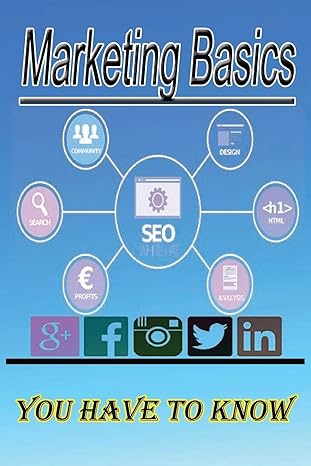Answered step by step
Verified Expert Solution
Question
1 Approved Answer
Please show the formulas if possible and explain! I have included the description, the assumptions which lay out the values from the descriptions and the
Please show the formulas if possible and explain! I have included the description, the assumptions which lay out the values from the descriptions and the other information from the Project Income Statement and Project OCF, if needed. Help! 



Production facilities for the new wine product would be set up in an unused section of Adams's main plant. Relatively inexpensive, used machinery with an estimated cost of only $500,000 would be purchased, but shipping costs to move the machinery to Adams's plant would total $40,000, and installation charges would add another $60,000 to the total equipment cost. Further, Adams's inventories (the new product requires some aging at the winery) would have to be increased by $20,000, and this cash flow is assumed to occur at the time of the initial investment. The machinery has a remaining useful life of 4 years, and the company has obtained a special tax ruling that allows it to depreciate the equipment under the MACRS 3-year class life. Under current tax law, the depreciation allowances are 0.33,0.45,0.15, and 0.07 in Years I through 4, respectively. The machinery is expected to have an after-tax salvage value of $50,000 after 4 years of use. The section of the plant in which production would occur has not been used for several years, and consequently had suffered some deterioration. Last year, as part of a routine facilities improvement program, Adams spent $200,000 to rehabilitate that section of the main plant. Dan Smith, the chief accountant, believes that this outlay, which has already been paid and expensed for tax purposes, should be charged to the wine project. His contention is that if the rehabilitation had not taken place, the firm would have had to spend the $200,000 to make the site suitable for the wine project. Adams's management expects to sell 200,000 bottles of the new wine product in the first year, with unit sales growing by 6% per year for the following 3 years (After the 4" year, the project will be terminated). The product is expected to sell at a wholesale price of $4.50 per bottle, but $3.35 per bottle would be needed to cover cash operating costs. In examining the sales figures, Resce noted a short memo from Adams's sales manager which expressed concern that the wine project would cut into the firm's sales of wine coolersthis type of effect is called erosion. Specifically, the sales manager estimated that wine cooler sales would fall by 5 percent if the new wine were introduced. Resce then talked to both the sales and production managers, and she concluded that the new project would probably lower the firm's wine cooler sales by $40,000 per year, but, at the same time, it would also reduce production costs for this product by $20,000 per year, all on a pre-tax basis. Thus, the net erosion effect would be -$40,000 + $20,000 = $20,000. Adams's federal-plus-state tax rate is 40 percent. Management believes the California Gold project carries a level of risk similar to that of Adams' existing lines of business, and therefore intends to evaluate the project against the firm's weighted average cost of capital which is currently estimated to be annroximately 1 200,000 6.00% Assumptions Year 1 Unit Sales Annual growth rate in unit sales Selling Price Variable Cost per unit Annual erosion cost Capital Expenditure Investment in Net Working Capital Tax Rate After-tax Salvage Value Cost of Capital 4.50 3.35 20,000 600,000 20,000 40.0% 50,000 11.50% MACRS Depreciation % 33.00% 45.00% 15.00% 7.00% Project Income Statement Year 0 4 Unit Sales Revenue Variable Costs Cost of Erosion Depreciation EBIT Taxes Net Income 200,000 900,000 670,000 20,000 198,000 12,000 4,800 7,200 212,000 954,000 710,200 20,000 270,000 -46,200 3 224,720 1,011,240 752,812 20,000 90.000 148,428 59,371 89,057 238,203 1,071,914 797,981 20,000 42,000 211,934 84.773 127,160 -46,200 Project Operating Cash Flow Year -46,200 270,000 EBIT Depreciation Taxes Operating CF 12,000 198,000 4,800 205,200 148,428 90,000 59,371 179,057 211,934 42,000 84,773 169,160 223,800 Net Working Capital Year 2 Initial NWC expenditure NWC Recovery Total change in NWC Capital Expenditure 1 Year 2 3 Initial Outlay Aftertax Salvage Value Capital Spending 50,000 50,000 50,000 $50,000 Project Total Cash Flows 0 1 Year 2 3 Operating CF Total Change in NWC Capital Spending Total Project Cash Flow Net Present Value IRR 



Step by Step Solution
There are 3 Steps involved in it
Step: 1

Get Instant Access to Expert-Tailored Solutions
See step-by-step solutions with expert insights and AI powered tools for academic success
Step: 2

Step: 3

Ace Your Homework with AI
Get the answers you need in no time with our AI-driven, step-by-step assistance
Get Started


